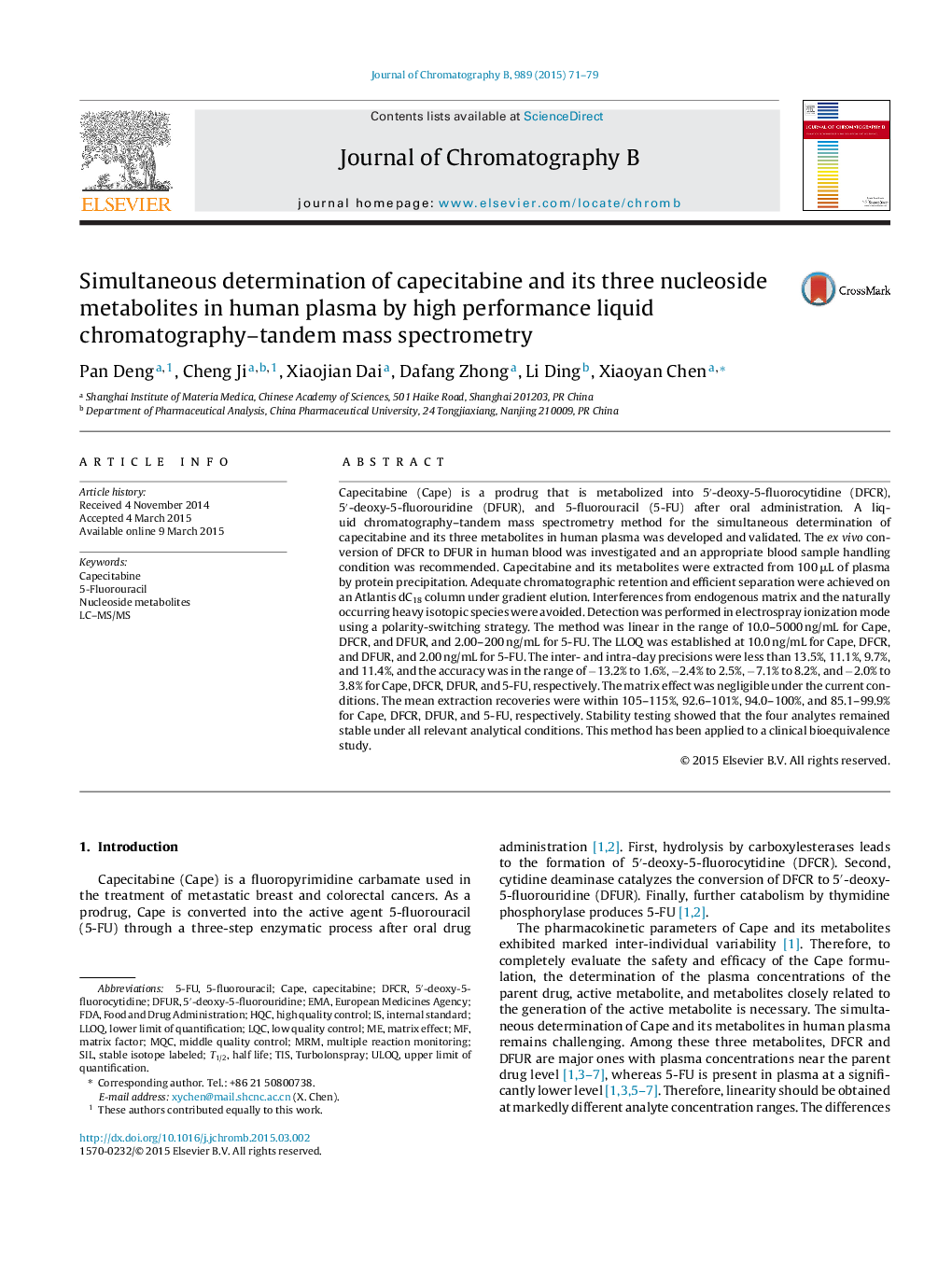| کد مقاله | کد نشریه | سال انتشار | مقاله انگلیسی | نسخه تمام متن |
|---|---|---|---|---|
| 1212250 | 1494059 | 2015 | 9 صفحه PDF | دانلود رایگان |
• Simultaneous determination of Cape and three metabolites in human plasma.
• The interferences from isotopic species were chromatographically separated.
• The ex vivo conversion of DFCR to DFUR in human blood was investigated.
• The validated method has been successfully applied to a bioequivalence study.
Capecitabine (Cape) is a prodrug that is metabolized into 5′-deoxy-5-fluorocytidine (DFCR), 5′-deoxy-5-fluorouridine (DFUR), and 5-fluorouracil (5-FU) after oral administration. A liquid chromatography–tandem mass spectrometry method for the simultaneous determination of capecitabine and its three metabolites in human plasma was developed and validated. The ex vivo conversion of DFCR to DFUR in human blood was investigated and an appropriate blood sample handling condition was recommended. Capecitabine and its metabolites were extracted from 100 μL of plasma by protein precipitation. Adequate chromatographic retention and efficient separation were achieved on an Atlantis dC18 column under gradient elution. Interferences from endogenous matrix and the naturally occurring heavy isotopic species were avoided. Detection was performed in electrospray ionization mode using a polarity-switching strategy. The method was linear in the range of 10.0–5000 ng/mL for Cape, DFCR, and DFUR, and 2.00–200 ng/mL for 5-FU. The LLOQ was established at 10.0 ng/mL for Cape, DFCR, and DFUR, and 2.00 ng/mL for 5-FU. The inter- and intra-day precisions were less than 13.5%, 11.1%, 9.7%, and 11.4%, and the accuracy was in the range of −13.2% to 1.6%, −2.4% to 2.5%, −7.1% to 8.2%, and −2.0% to 3.8% for Cape, DFCR, DFUR, and 5-FU, respectively. The matrix effect was negligible under the current conditions. The mean extraction recoveries were within 105–115%, 92.6–101%, 94.0–100%, and 85.1–99.9% for Cape, DFCR, DFUR, and 5-FU, respectively. Stability testing showed that the four analytes remained stable under all relevant analytical conditions. This method has been applied to a clinical bioequivalence study.
Journal: Journal of Chromatography B - Volume 989, 1 May 2015, Pages 71–79
